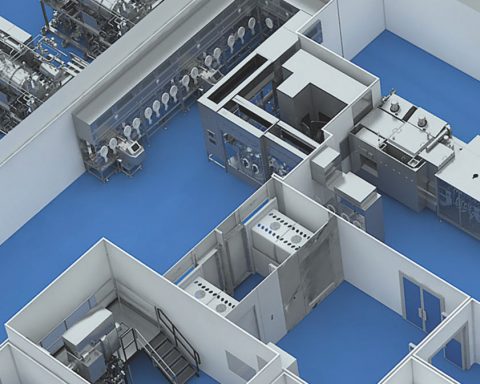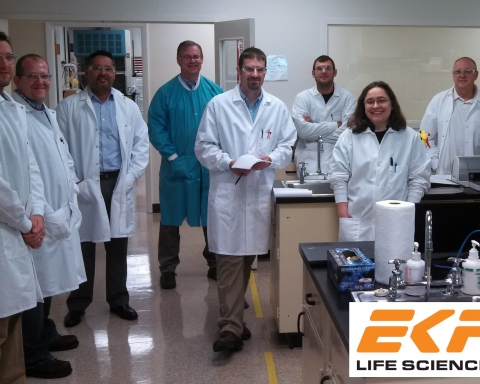[wp_ad_camp_4]In the pharmaceutical word, it’s extremely important to qualify and validate equipment and procedures, in order to not only adhere to requirements, but to hit those higher standards. This has to happen consistently and professionally.
Validation in a pharmaceutical setting is an essential process of establishing documentary evidence that successfully demonstrates that a process, procedure or activity that takes place during the production or testing stages maintains a specific standard of compliance.
Qualification is done to ensure that process equipment and systems are consistently operation within established parameters and limits.
User Requirement Specification (URS)
This is an absolutely key document during qualification. It must be clear, exacting, and able to test. What are the expectations of the customer? Will the equipment be able to meet expectations? Is it well manufactured? Will it be easy enough to operate and maintain? Good Manufacturing Process (GMP) have a specific set of standards that must be adhered to, ensuring that pharmaceutical equipment will not post a danger to the public. Regulatory agencies oversee this process. CGMPs, or Current Good Manufacturing Processes are regulated by the Food and Drug Administration, or FDA. They closely monitor how products are made and have strict guidelines.
The type of validation service you use when validating your equipment is very important to maintain quality of the product. Here are four important things you want to achieve:
- Process optimization
- Cost reduction
- Assurance of quality
- Safety
Let’s go over equipment validation in 5 key steps or components:
- Design Qualification (DQ)
- Installation Qualification (IQ)
- Operational Qualification (OQ)
- Performance Qualification (PQ)
- Requalification (RQ)
Design Qualification
This is the stage that pre-sets the specifications required for equipment before purchase. It describes required features while outlining the decision process used in equipment selections. You will want to take several things into consideration at this time, including: capabilities (such as speed and capacity) your requirements (such as space limitations, compatibility with existing equipment, and voltage) as well as features that you want to have (is it self cleaning? Self calibrating? Why this specific model?)
[wp_ad_camp_4]Installation Qualification
Documented proof consisting of when and where products have been received, the condition, testing of operation instructions, as well as evidence of test data and alarm systems.
Operational Qualification
This test measures that the equipment is functioning correctly. During this stage, the items should be processed as well as documented to make sure they fit specifications. Does it function the way or ways it is designed to by the manufacturer? For example, if a centrifuge is involved, does it turn on and off, and spin the way it is supposed to? Does it demonstrate accurate performance based on its programming? There must be a description of what is going to be tested. This is known as the OQ test plan. Next, the results must be put together concisely and compiled into a report. Anything outside of expectations should be taken note of, and a re-test at this point should occur. Inspections must be done of the equipment including, but not exclusively, any signals, temperature controls, pressure humidity controls (if applicable). Has the equipment been calibrated, and by whom? Proper documentation must be attached here.
Performance Qualification
This is one of the most important steps of the process, and its point is to document and make sure is working the way it should over a specific range of time the way it is supposed to. It measures the limits and range of the equipment. With the performance evaluation, the emphasis is placed on the equipment itself rather than the process. Once again, a well made plan must be cultivated before testing can occur. Does the equipment produce the desired results? Do the physical tests of the product demonstrate stability and adherence to standards? Sometimes, a plan must be created to utilize in the case of equipment failure in an emergency situation. After all data has been collected, this information is put into a final report to be submitted. The results will be the determining factor for acceptable qualification of equipment.
Requalification
Determine necessity for this during consultation. Requalification may occur if any incident happens that affects equipment performance, if equipment moves, if there is a power surge or blackout, or if there is an upgrade to the equipment. Sometimes, if equipment is used in a new way there will also be a need for requalification. If equipment passes all the set standards, it is then validated.
Importance of Equipment Validation Services
[wp_ad_camp_1]
In order to maintain quality, standards, safety, lower costs and to really operate your equipment the way it should be operated, it is not only a plus, but absolutely necessary to obtain calibration and validation services for your equipment. If you don’t have adequate information and knowledge about your products, how can you possibly know if they are functioning the way they should be? Unless you have qualified professionals testing your equipment, you’ll be in the dark. Information is power. Have your equipment qualified and validated, and you and your products will be at the top of your game. Make sure you are truly meeting your standards.








